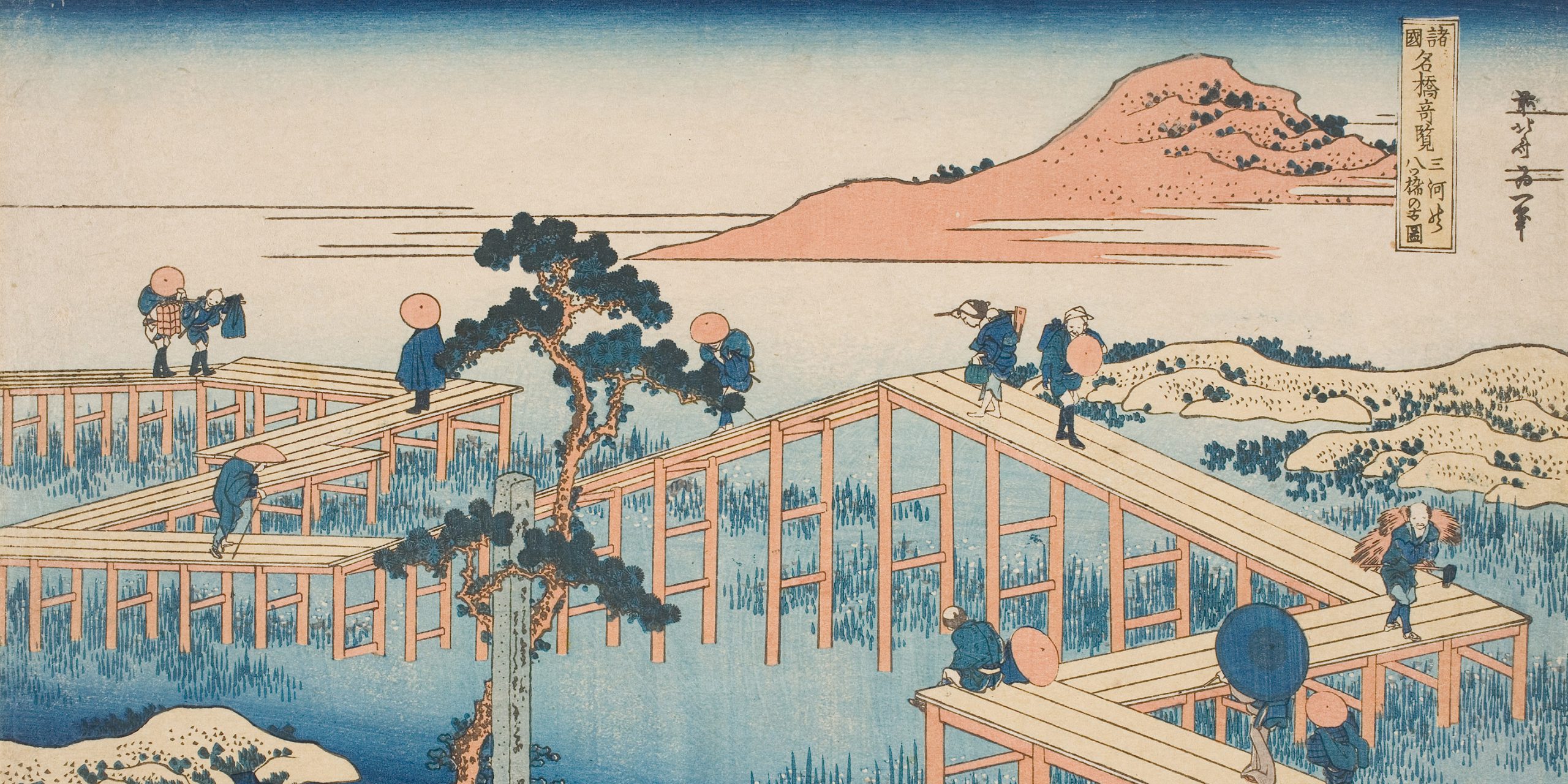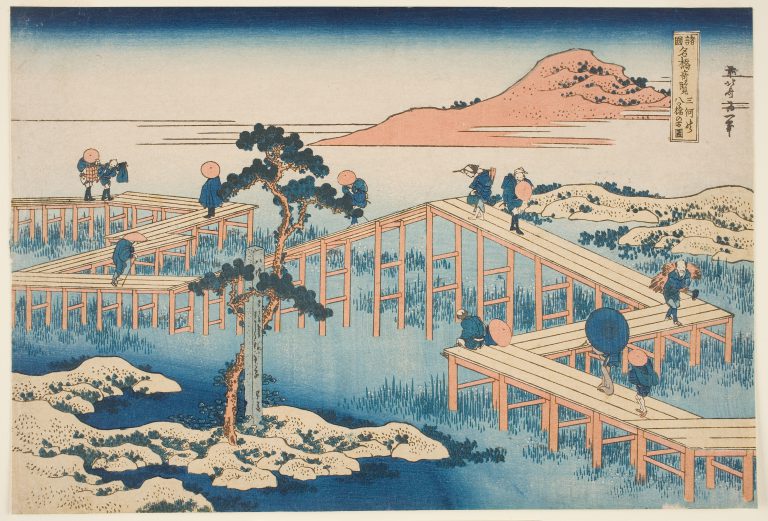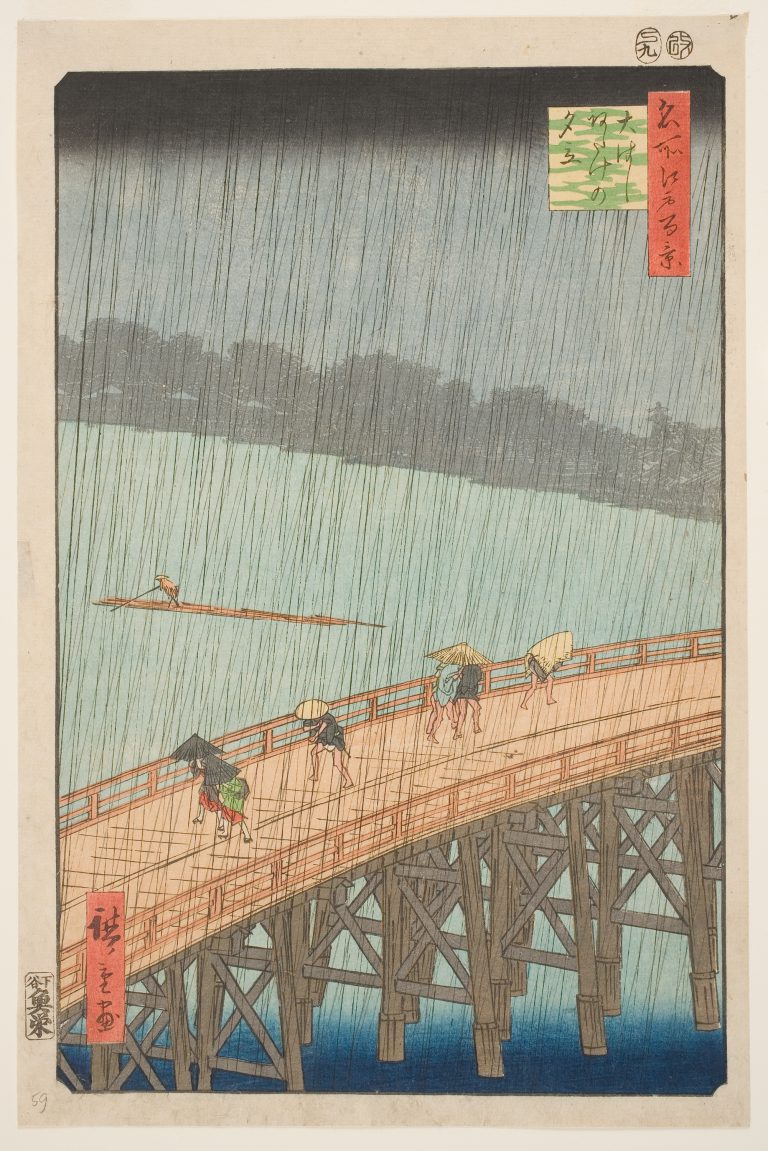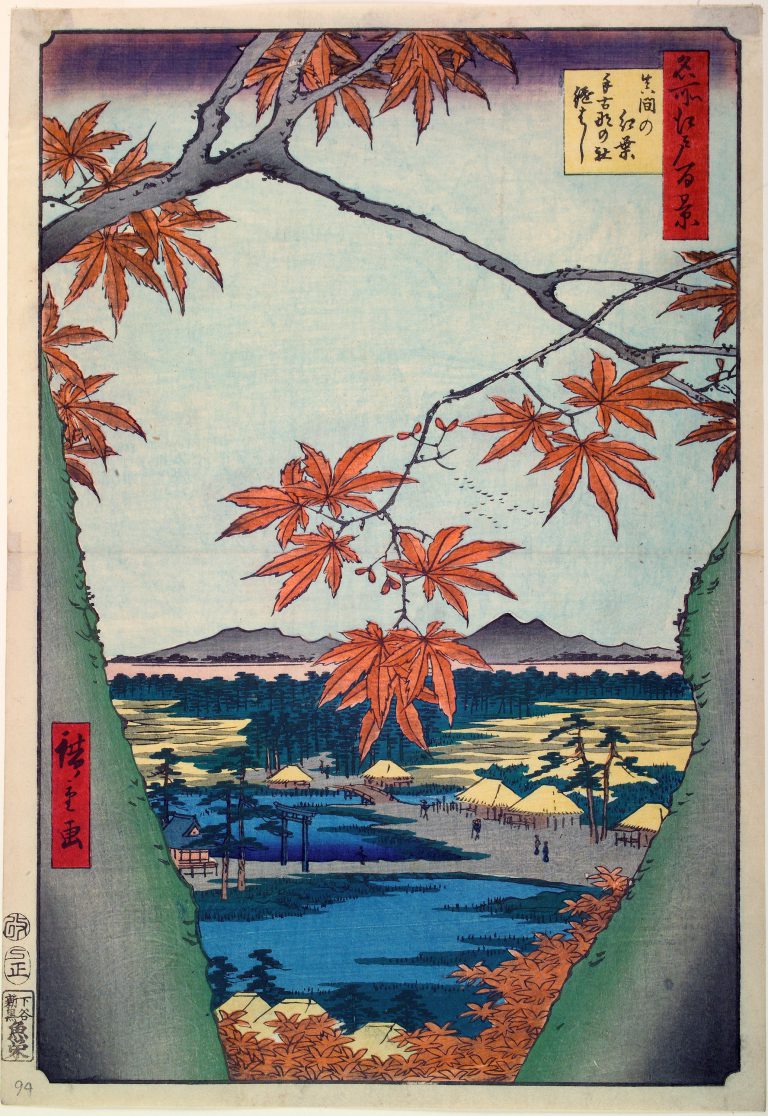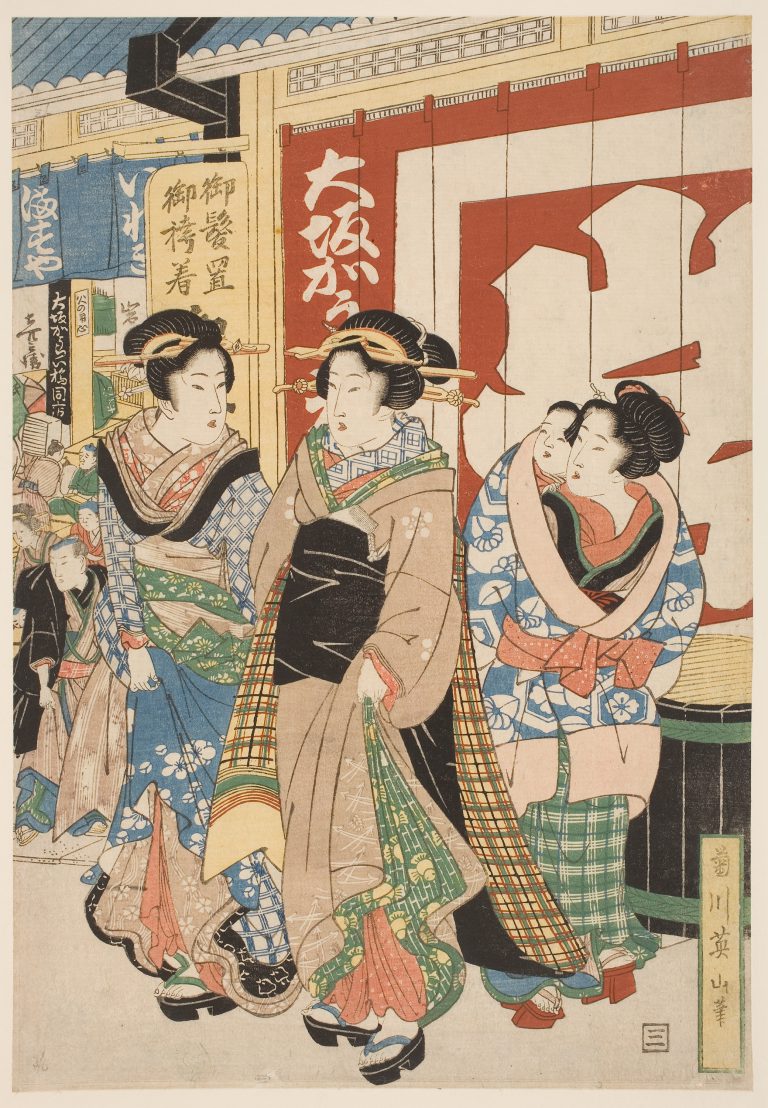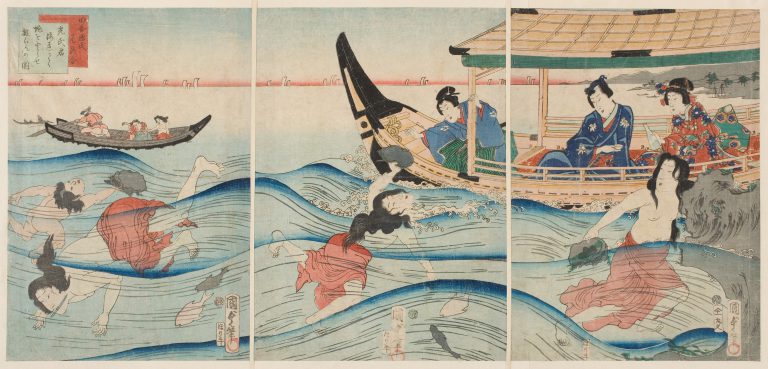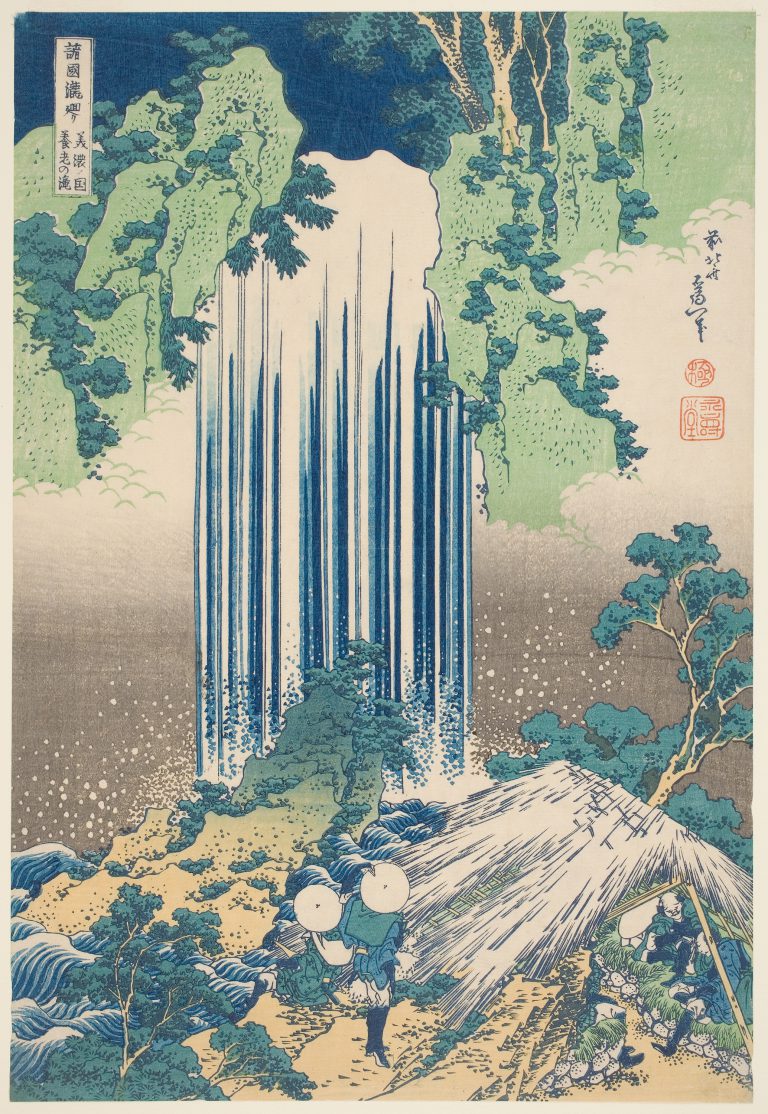This winter, travel hundreds of years through one of the most culturally abundant periods in world history. The Floating World: Japanese Prints from the Bancroft Collection illustrates the beauty of everyday life through 50 Japanese woodblock prints from the Museum’s collection, 48 of which are displayed for the first time. The exhibition pulls directly from WAM’s Bancroft Collection of over 3,700 Japanese prints—the first collection of its kind in the United States.
The Floating World focuses specifically on ukiyo-e artworks, a diverse genre of art created throughout Japan’s Edo period (1603-1868). Translating to “pictures of the floating world,” ukiyo-e prints often depict scenes of leisure and arts regularly enjoyed by the working class during an age of great economic growth. These prints tell stories in the form of intricate tableaus portraying courtesans, kabuki actors, sumo wrestlers, dwellings, and landscapes. Intricate and colorful, ukiyo-e prints center themes like resilience and pride, ideas we celebrate today.
Given to the Museum in 1901, the collection of John Chandler Bancroft (1835-1901) is considered WAM’s first major collection. The Floating World illustrates the breadth of Bancroft’s collection, displaying artworks that range in size, material, date, and subject matter, with renowned artists including Katsushika Hokusai, Utagawa Kunisada, and Utagawa Hiroshige. Featuring artworks like Hiroshige’s Sudden Shower over Shin-Ōhashi Bridge and Atake (1857), which inspired a painting by Vincent van Gogh, The Floating World provides opportunities to come closer to artists whose influences are evident in cultural expression around the world.
This exhibition is curated by Dr. Rachel Parikh, former Associate Curator of the Arts of Asia and the Islamic World, and Fiona Collins, Curatorial Assistant of Asian Art.
